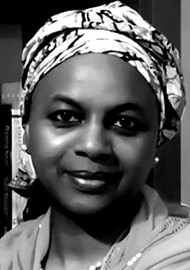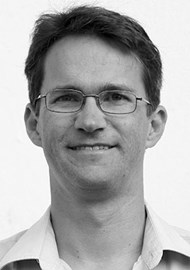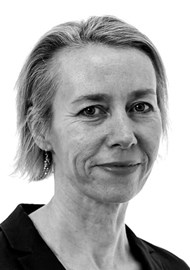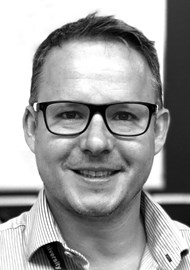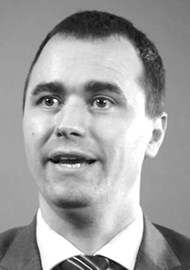Background
Glaucoma is the second most common cause of blindness worldwide [1]. People with untreated glaucoma suffer from irreversible, progressive loss of sight. The disease is characterised by progressive loss of visual field, with pathological cupping of the optic disc and often (but not always) increased pressure in the eye. Early stages affect the field of vision and are often not noticed by the patient. The final stage is irreversible absolute blindness.
Glaucoma treatment is primarily to lower the intraocular pressure to a ‘safe’ level through eye drops and/or laser treatment and/or surgical interventions. The highest prevalence and incidence of glaucoma exists in sub-Saharan Africa and the Caribbean [2-5]. The key requirements to tackle glaucoma blindness in these regions are the early identification of people with glaucoma, and effective long-term treatment.
Establishment of Glaucoma-NET
The Glaucoma Clinical and Research Network (Glaucoma-NET) was established in 2021 at the International Centre for Eye Health (ICEH), London School of Hygiene & Tropical Medicine (LSHTM), under the VISION 2020 LINKS Programme [6]. It is formed of a group of LINKS partnerships whose aim is to improve the care of people with glaucoma in low- and middle-income countries (LMICs). Glaucoma-NET works in a way that strengthens the eye health system, through capacity-building, training, research, and bringing patients and clinicians together to plan and develop eye health services, to ensure a lasting and sustainable impact.
“The toolkit is owned by African eye care professionals and specialists who are true experts. Its development was supported by Light for the World. It is something that all involved should be very proud of” – Fatima Kyari, Glaucoma-NET lead
Glaucoma-NET is led by Fatima Kyari who works at the University of Abuja, Nigeria and at LSHTM [9]. She works with the VISION 2020 LINKS Programme team at LSHTM, who have extensive experience of establishing and running international eye health partnerships and of bringing together global networks of clinical and Ministry of Health (MoH) teams to share learning, plan service delivery and improve the outcomes for specific eye diseases; and with other glaucoma experts internationally. The initial glaucoma centres in the Network are Abuja, Lagos, Calabar, Enugu and Bauchi in Nigeria, together with centres in Ghana, The Gambia, Burkina Faso, Tanzania, Uganda and Mozambique.

Glaucoma outreach activity in Calabar, Nigeria.
As technical lead for Glaucoma-NET, Dr Kyari has brought together an international network of experts in glaucoma, including Winnie Nolan from the UK, Mohammed Abdull from Nigeria, Dan Kiage from Kenya, and Heiko Philippin from Germany, who provide advice and share learning with all the network centres.
Glaucoma-NET objectives
The objectives of the Glaucoma-NET are:
a) to develop meaningful partnerships between glaucoma centres in high/middle/low-income countries
b) to share knowledge on best practice between clinicians, centres, and countries
c) to agree on shared guidelines and protocols
d) to develop specific national action plans to improve glaucoma screening and treatment services.
Glaucoma-NET activities
The key activities of Glaucoma-NET are:
- Best Practice Toolkit
Development of the ‘Toolkit for Glaucoma Management in sub-Saharan Africa’, which is appropriate for LMICs and adaptable for each specific country and context. - Training and Planning Workshops
Online or face-to-face workshops with knowledge sharing and planning of programmes. - Continuing Professional Development / Certification
Offer CPD with points / certification in diagnostic skills, treatment modalities, programme planning and public engagement. This includes GLAucoma Simulated Surgical (GLASS) training. - Centre Twinning / Partnerships
One-to-one LINK clinical observerships with reciprocal exchange visits by partner teams. - Glaucoma Decision-Intervention Support Cluster (The Glaucoma DISC)
Clinical and programmes decision support. This involves monthly virtual meetings and an interactive online, international knowledge-sharing, members-only website. - Train the Trainers
This will ensure that the glaucoma ophthalmologists in the Network are able to train the next generation of glaucoma specialists in their countries. - Collaborative multi-country research
The network provides a foundation for multi-centre and multi-country research in glaucoma to generate evidence for new interventions for the early diagnosis and optimal treatment of glaucoma in LMICs. - Advocacy for improved resources for glaucoma care
The Network will collaborate with other glaucoma and eye health groups – patient groups, professional associations, charities, and NGOs - worldwide in advocacy.
Successes of Glaucoma-NET to date
Notable successes of Glaucoma-NET so far have been:
- the development of the Glaucoma Toolkit and its implementation in Burkina Faso and Mozambique [7]
- hosting monthly international online case discussion and training sessions (DISC)
- simulation-based surgical training [8].
Glaucoma Toolkit
The ‘Toolkit for Glaucoma Management in sub-Saharan Africa’ is a unique document that goes much further than any previous guidelines – it empowers glaucoma teams to set up integrated glaucoma services appropriate to their own LMIC context [7]. The Toolkit was launched in 2021 by the International Agency for the Prevention of Blindness (IAPB). A video introducing the toolkit is available here:
https://youtu.be/aNOGc3QEJME
It is a clinical examination and decision-support manual, as well as a programme set-up guide for glaucoma teams. The implementation of the Toolkit is essential to ensure that best practice is used in the management of glaucoma in LMICs.
Glaucoma DISC
The Glaucoma DISC is an online forum that meets monthly for an hour. Sessions are usually a combination of clinical training and a case presentation. To date DISC meetings have involved glaucoma specialists from 14 countries. The case discussion below is a summary of one of the cases presented and discussed during a DISC session in 2021.

Support from the Lions Club for the educational activities of the Glaucoma
Patient Support Group in Calabar during World Glaucoma Week 2022.
GLAucoma Simulated Surgical (GLASS) training
Plans are in place for glaucoma training courses, incorporating simulated glaucoma surgery as well as live clinical and surgical training, based on the course developed by Will Dean and colleagues in collaboration with various eye health institutions across Africa [8]. It is planned that an initial intense two-day simulation-based course will be run for up to 20 LMIC ophthalmologists at a time using a ‘hub-and-satellite’ ‘GLASS TrabLab’ approach developed in partnership with the Royal College of Ophthalmologists. The course will be extended to a review of patients and clinical skills enhancement in clinic and hands-on live surgical training with local consultant trainers. Lectures and videos will be uploaded in advance and the ‘flipped classroom’ technique will be used. Throughout the course there will be small-group discussions and formative assessments to reinforce learning.
There will also be an element of train-the-trainers (TTT) during the course, offering training in the flipped classroom technique, and transferable pedagogic skills for simulation-based ocular surgical training.
Collaborative multi-centre research
Many Glaucoma-NET participants are already active in glaucoma research; the network enhances opportunities for greater collaboration and facilitates multi-centre and multi-country studies. Examples of research already underway in LINKS and Glaucoma-NET include epidemiology and risk factors, improving treatment, and understanding barriers to accessing glaucoma care, all of which are priorities for reducing vision loss and blindness due to glaucoma in sub-Saharan Africa [10-13].
Looking to the Future
Key to the success of the Glaucoma-NET and its sustainability is local ownership. Local ownership has already been demonstrated by the enthusiastic take-up of the Glaucoma-NET DISC meetings by participants from 14 countries. There is a huge desire among eye health professionals to improve glaucoma outcomes for their patients. The Toolkit provides a framework and a ‘how to’ for every glaucoma team in LMICs to participate in improving their services and offering ‘best practice’ to their patients. Local ownership has also been demonstrated in the newly established simulation skills centres in Kenya, Rwanda, Tanzania, Togo and Uganda. Funding is needed to enable all the facets of Glaucoma-NET to come to fruition. Grants are needed to address the various aspects of the Network’s activities; help is sought to identify and attract potential funders in the UK and overseas.
Case discussion from Glaucoma DISC held on 28 October 2021
Presented by Affiong Ibanga, Consultant Ophthalmologist,
University of Calabar Teaching Hospital (UCTH), Nigeria.
Patient description
The case presented was EC, a 36-year-old male who had been previously working as a barber but had lost his job due to failing sight. His distance vision had deteriorated over the last year and his near vision was blurred. He presented to the Eye Clinic at UCTH, Calabar, in August 2021.
Case history
No significant previous history of surgery; no history of systemic illness. His father was blind; his mother and siblings had no vision problems. He had been prescribed glaucoma medications at a secondary health facility but had stopped taking them three months earlier.
Examination results
A general examination revealed normal findings. Gonioscopy revealed an open angle. Examination of the fundus showed that the red reflex was good in both eyes. The intraocular pressure in the right eye was 56 mmHg and in the left eye 52 mmHg. The cup-to-disc ratio was 0.99 in the right eye and 0.94 in the left eye. There was peripapillary atrophy in both eyes.
Diagnosis
The diagnosis was bilateral advanced primary open angle glaucoma (POAG).
Treatment plan
The patient had been advised of the need for surgery: trabeculectomy with mitomycin C. Medical treatment with drops was started. Follow-up after three weeks showed that intraocular pressure had come down to 22 in the right eye and 29 in the left eye.
Counselling had been given to explain the need for him to have surgery and for his siblings to have their eyes examined. He had declined surgery because of the cost, as he had to support his mother and siblings and had lost his job. Dr Ibanga continued to hope that he would have surgery.
Discussion by DISC panel
The panel discussed the issue of the cost of surgery and compared the cost of trabeculectomy in different hospitals and different cities in Nigeria. There was significant variation. In some places the cost of selective laser trabeculoplasty (SLT) was on a par with the cost of trabeculectomy and in other places it was cheaper. In Calabar continuous wave transscleral laser was available and was cheaper than trabeculectomy. The panel felt that SLT laser had good efficacy. The need to avoid inflammation in the eye was vital. It was felt that one eye should be done, then see if the procedure had worked before doing the other eye.
The issue of funding was discussed. A donor had stepped in to cover the costs of the tests and his transport to Calabar as the patient had been unable to pay. One of the panel said that in his government hospital in Nigeria, if the patient cannot afford treatment, they can be put through for free. He urged the Calabar team to try and obtain treatment for the patient this way as quickly as possible.
The case highlighted the socioeconomic issues that commonly affect access to appropriate eye care in LMICs and put patients at high risk of vision loss and blindness.
References
1. Bourne RRA, Steinmetz JD, Saylan M, et al. Causes of blindness and vision impairment in 2020 and trends over 30 years, and prevalence of avoidable blindness in relation to VISION 2020: the Right to Sight: an analysis for the Global Burden of Disease Study. Lancet Glob Health 2021;9(2):e144-60.
2. Kyari F, Abdull MM, Bastawrous A, et al. Epidemiology of glaucoma in sub-Saharan Africa: prevalence, incidence and risk factors. Middle East Afr J Ophthalmol 2013;20(2):111-25. Available from:
https://pubmed.ncbi.nlm.nih.gov/23741130/
3. Tham Y-C, Li X, Wong TY, et al. Global prevalence of glaucoma and projections of glaucoma burden through 2040: a systematic review and meta-analysis. Ophthalmology 2014;121(11):2081-90. Available from:
https://pubmed.ncbi.nlm.nih.gov/24974815/
4. Leske MC, Connell AMS, Schachat AP, et al. The Barbados Eye Study: Prevalence of open angle glaucoma. Arch Ophthalmol 1994;112(6):821–9. Available from:
https://pubmed.ncbi.nlm.nih.gov/8002842/
5. Leske MC, Wu SY, Honkanen R, et al. Nine-year incidence of open-angle glaucoma in the Barbados Eye Studies. Ophthalmology 2007;114(6):1058-64. Available from:
https://pubmed.ncbi.nlm.nih.gov/17397925/
6. VISION 2020 LINKS Programme:
https://iceh.lshtm.ac.uk/links/
7. A Toolkit for Glaucoma Management in Sub-Saharan Africa - Light for the World International.
https://www.light-for-the-world.org/
publications/a-toolkit-for-glaucoma-
management-in-sub-saharan-africa/
8. Dean WH, Buchan J, Gichuhi S, et al. Simulation-based surgical education for glaucoma versus conventional training alone: the GLAucoma Simulated Surgery (GLASS) trial. A multicentre, multicountry, randomised controlled, investigator-masked educational intervention efficacy trial in Kenya, South Africa, Tanzania, Uganda and Zimbabwe. Br J Ophthalmol 2022;106:863-9. Available from:
https://bjo.bmj.com/content/bjophthalmol/
early/2021/01/24/bjophthalmol-2020
-318049.full.pdf
9. Vision Excellence Awards: Fatima Kyari. The International Agency for the Prevention of Blindness. https://www.iapb.org/connect/members
/vision-excellence-awards/vision-excellence
-awards-fatima-kyari/
10. Abdull MM, Broadway DC, Evans J, et al. Safety and effectiveness of primary transscleral diode laser cyclophotoablation for glaucoma in Nigeria. Clinical & experimental ophthalmology. Clin Exp Ophthalmol 2018;46(9):1041-7. Available from:
https://doi.org/10.1111/ceo.13328
11. Bastawrous A, Mathenge W, Buchan J, et al. Glaucoma features in an East African population: a 6-year cohort study of older adults in Nakuru, Kenya. J Glaucoma 2018;27(5):455-63. Available from:
https://pubmed.ncbi.nlm.nih.gov/29557831/
12. Gilmour-White JA, Shah P, Cross V, et al. Glaucoma awareness and access to healthcare: perceptions among glaucoma patients in Tanzania. Postgrad Med J 2015;91(1077):373-8.
13. Philippin H, Matayan E, Knoll KM, et al. Selective laser trabeculoplasty versus 0·5% timolol eye drops for the treatment of glaucoma in Tanzania: a randomised controlled trial. Lancet Glob Health 2021;9:E1589-99.
14. Abdull MM, Broadway DC, Evans J, et al. Safety and effectiveness of primary transscleral diode laser cyclophotoablation for glaucoma in Nigeria. Clin Exp Ophthalmol 2018;46(9):1041-7. Available from:
https://doi.org/10.1111/ceo.13328
[All links last accessed April 2022].
COMMENTS ARE WELCOME




